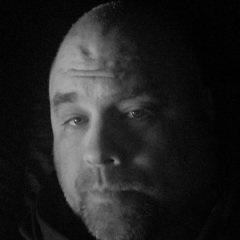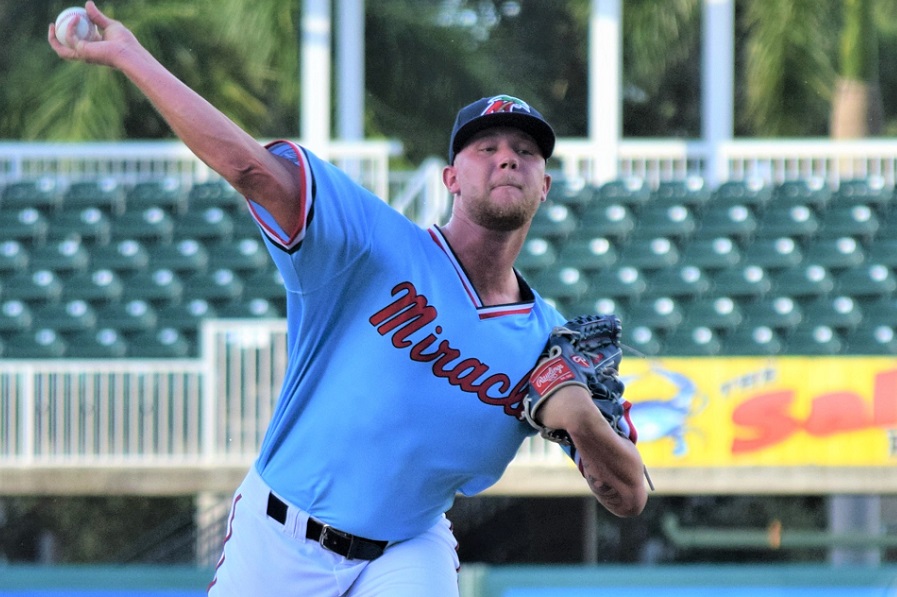Search the Community
Showing results for tags 'toby gardenhire'.
-
- 4 comments
-
- toby gardenhire
- ramon borrego
-
(and 3 more)
Tagged with:
-
On Thursday, the Twins’ minor-league affiliates announced their managers and coaching staffs for the 2023 season. Find out who will be working with the Twins minor leaguers to help them develop and advance through the organization....
- 4 replies
-
- toby gardenhire
- ramon borrego
-
(and 3 more)
Tagged with:
-
The Minnesota Twins got smoked in Arizona on Father's Day. Down in the minors, Cedar Rapids won on a walk-off in another big game from both Alerick Soularie and Sean Mooney. That and more in tonight's system recap. View full video
- 1 reply
-
- alerick soularie
- sean mooney
-
(and 3 more)
Tagged with:
-
The Minnesota Twins got smoked in Arizona on Father's Day. Down in the minors, Cedar Rapids won on a walk-off in another big game from both Alerick Soularie and Sean Mooney. That and more in tonight's system recap.
- 1 comment
-
- alerick soularie
- sean mooney
-
(and 3 more)
Tagged with:
-
Jordan Balazovic made his first start of the 2022 season with the St. Paul Saints this last Saturday coming off of a knee injury that set his season start back. Balazovic is currently on an 80 pitch count limit, so what are the expectations for him this month? The Twins' top pitching pr...
- 3 replies
-
- jordan balazovic
- toby gardenhire
-
(and 1 more)
Tagged with:
-
On Wednesday, the Minnesota Twins and their affiliates announced their managers and coaching staffs for the 2022 season. In addition, the full Player Development staff was announced. All four full-season affiliates will have their 2021 manager return to lead them again in 2022. The St. Paul S...
- 7 replies
-
- alex hassan
- toby gardenhire
-
(and 3 more)
Tagged with:
-
All four full-season affiliates will have their 2021 manager return to lead them again in 2022. The St. Paul Saints will be led again by Toby Gardenhire. Ramon Borrego will be managing the Wichita Wind Surge. Brian Dinkelman returns to the Cedar Rapids Kernels, and Brian Meyer will be again managing...
- 7 comments
-
- alex hassan
- toby gardenhire
-
(and 3 more)
Tagged with:
-
In one year’s time, Toby Gardenhire climbed from 45th to first on a managerial list. Gardenhire was scheduled to be the Rochester Red Wings’ 45th manager in 2020. This season, however, he will be the St. Paul Saints’ first manager.First manager with the club under the Minnesota Twins’ affiliate um...
-
First manager with the club under the Minnesota Twins’ affiliate umbrella, anyway. After all, there have been five managers in the history of this iteration of the Saints franchise -- most recently with George Tsamis for the last 18 years. Prior to officially introducing him to the media, Saints gen...
-
For the first time in perhaps a decade or more, the Minnesota Twins are a true “buyer” as the July 31 trade deadline approaches, looking for pitching help to solidify not only their bullpen, but also perhaps their starting rotation. They’ve been linked through media reports to virtually every top of...
- 5 replies
-
- blayne enlow
- toby gardenhire
-
(and 2 more)
Tagged with:
-
.thumb.jpg.48552c72210992c8af51c0f0b81fd8ec.jpg)
For Enlow and Other Minor Leaguers, “No One Is Safe” At Trade Deadline
Steven Buhr posted an article in Minors
That means that, for the first time in the professional baseball careers of virtually every Twins minor leaguer, there’s a chance that any one of them could find themselves packing their bags this week and moving on to another organization. Fort Myers Miracle pitcher Blayne Enlow knows the score. “N...- 5 comments
-
- blayne enlow
- toby gardenhire
-
(and 2 more)
Tagged with:
-
Even with a roster about half full of organizational top prospects at his disposal, it’s pretty easy for the manager to pencil in two first-round draft picks sandwiched around a top-10 international signing in those top three spots in the batting order. Royce Lewis, baseball’s first overall draft pi...
- 17 comments
-
- royce lewis
- lewin diaz
-
(and 3 more)
Tagged with:
-
.thumb.jpg.48552c72210992c8af51c0f0b81fd8ec.jpg)
Article: Giving Opponents Ls in Fort Myers
Steven Buhr posted a topic in Twins Daily Front Page News
“Triple-L,” “Give ‘em HeLLL,” however you want to say it, “Lewis, Lewin and Larnach” is all Fort Myers Miracle manager Toby Gardenhire has to remember when it comes to filling out the top of his lineup card as his team makes a drive to lock up a postseason spot by winning the South Division of the F...- 17 replies
-
- royce lewis
- lewin diaz
-
(and 3 more)
Tagged with:
-
One name you won’t find on many list of high round picks or consensus top-ranked prospects is Hector Lujan. You would have to go to some kind of top “performers” list to find Lujan and, when you do, you’re likely to find the relief pitcher’s name near the top of that list. Lujan got off to a sluggis...
- 5 comments
-
- hector lujan
- andrew vasquez
-
(and 1 more)
Tagged with:
-
When you look through this summer’s Fort Myers Miracle roster, you can see it’s packed with several of the Minnesota Twins’ top prospects. At least ten players were selected within the top five rounds of the annual MLB amateur entry draft and others were international players that garnered hefty sig...
- 5 replies
-
- hector lujan
- andrew vasquez
-
(and 1 more)
Tagged with:
-
After the Cedar Rapids Kernels finished batting practice on a warm, humid July 4 afternoon, two of the most productive players on their roster agreed to sit down and talk about the season. One, an infielder, has been hitting over .300 with an on-base percentage around .400 virtually all season. (A...
- 8 replies
-
- randy dobnak
- jordan gore
-
(and 2 more)
Tagged with:
-
Unless you’re a pretty serious student of the Minnesota Twins’ minor league system or a Kernels season ticket holder, there’s a chance you’ve never heard of either of them. Jordan Gore was selected by the Twins out of Coastal Carolina in the 17th round of the 2017 draft and Randy Dobnak never got a...
- 8 comments
-
- randy dobnak
- jordan gore
-
(and 2 more)
Tagged with:
-
Since then, however, Miranda has not only been hitting at a respectable .262 rate, but has six doubles, a triple and four home runs among his 40 post-April hits. Being younger than almost all of the pitchers he was facing would be enough of a factor to explain the slow start with the bat, but Mirand...
- 17 comments
-
- jose miranda
- royce lewis
-
(and 3 more)
Tagged with:
-
The month of April was not kind to Cedar Rapids Kernels infielder Jose Miranda. After hitting .284 and putting up a .824 on-base plus slugging (OPS) for rookie level Elizabethton in 2017, Miranda was one of several highly-regarded hitting prospects that were expected to power the Kernels’ offense...
- 17 replies
-
- jose miranda
- royce lewis
-
(and 3 more)
Tagged with:
-
In 1989, the Minnesota Twins used their 52nd round draft pick to select a catcher named Denny Hocking from El Camino College, a junior college in Torrance, California. Drafted in a round that no longer exists, Hocking not only became the lowest-drafted player to play for the Twins, but he spent 13 s...
- 16 replies
-
- denny hocking
- toby gardenhire
-
(and 2 more)
Tagged with:
-
“It was opportunity that I made the most of. That’s all!” That statement from former Twins utility man Denny Hocking is certainly true and maybe even an understatement as he continues to work in the game nearly 30 years later. Hocking grew up in Torrance, California, were he was a great athlete. He...
- 16 comments
-
- denny hocking
- toby gardenhire
-
(and 2 more)
Tagged with:
-
When Brian Dinkelman hung up his spikes as a player after the 2013 season, a defensive shift with three infielders on one side of second base was still a relative novelty being employed occasionally by the Houston Astros and perhaps one or two other teams at the Major League level. Less than five ye...
- 2 replies
-
- brian dinkelman
- royce lewis
-
(and 3 more)
Tagged with:
-
Less than five years later, “Dink” is in his third season as the Cedar Rapids Kernels’ hitting coach and he and Kernels manager Toby Gardenhire are seeing the infield shift deployed several times on a nightly basis – both against their team’s hitters and by their own infielders. The times, they are...
- 2 comments
-
- brian dinkelman
- royce lewis
-
(and 3 more)
Tagged with:
-
During my time in Cedar Rapids, I had spent time both Friday and Saturday with Royce Lewis and Alex Kirilloff. They are both terrific people. One might say that they are better people than they are baseball players. I think those that know them will agree with that statement even understanding that...
- 50 comments
-
- royce lewis
- alex kirilloff
-
(and 1 more)
Tagged with:
-
Recent Articles
-
Recent Posts
-
3
Hey, look here
Whoooooooo Ranked ProspectsTurangChourioQueroFrelickBillWilburSpankyEdgarJohn NOOOOOOOOOO...
By Brock Beauchamp
Last post date -
0
Can Jorge López Rediscover His First-Half Success?
The Twins made a much-needed trade for an all-star reliever at last year’s deadline, but what they got fell short of e...
By Lou Hennessy
Last post date
-
Blog Entries
-
Who's Online (See full list)
- There are no registered users currently online










.thumb.jpg.48552c72210992c8af51c0f0b81fd8ec.jpg)












